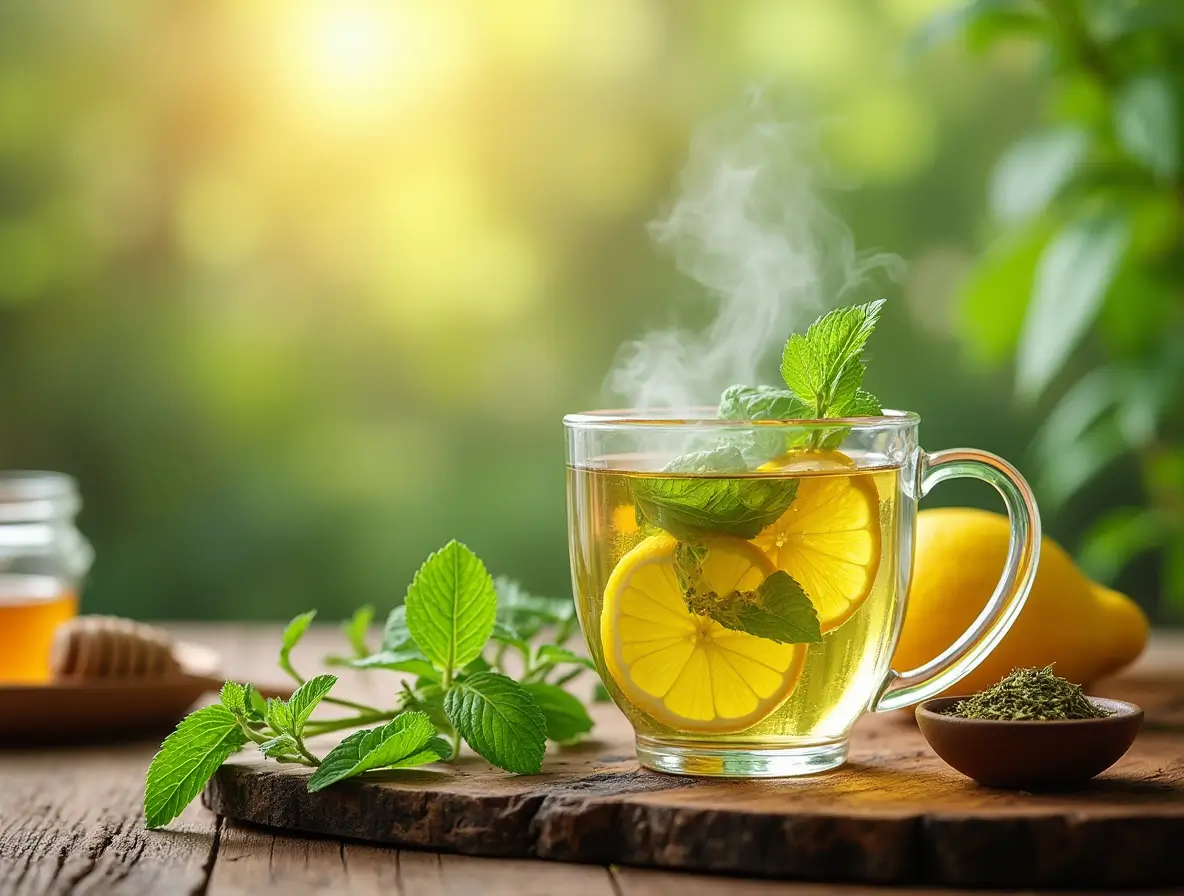Struggling to shed those extra pounds? Discover the power of lemon balm, a fragrant herb with potential weight-loss benefits, and delicious ways to incorporate it into your diet.
Table of Contents
Embarking on a weight loss journey often leads to exploring natural options, and lemon balm (Melissa officinalis) is one such versatile herb. Known for its refreshing flavor and digestive benefits, this mint-family herb has been used for centuries in traditional medicine. In this guide, we’ll explore its potential role in weight management and share delicious lemon balm recipes to help you incorporate it into your routine.
Understanding Lemon Balm Recipe for Weight Loss
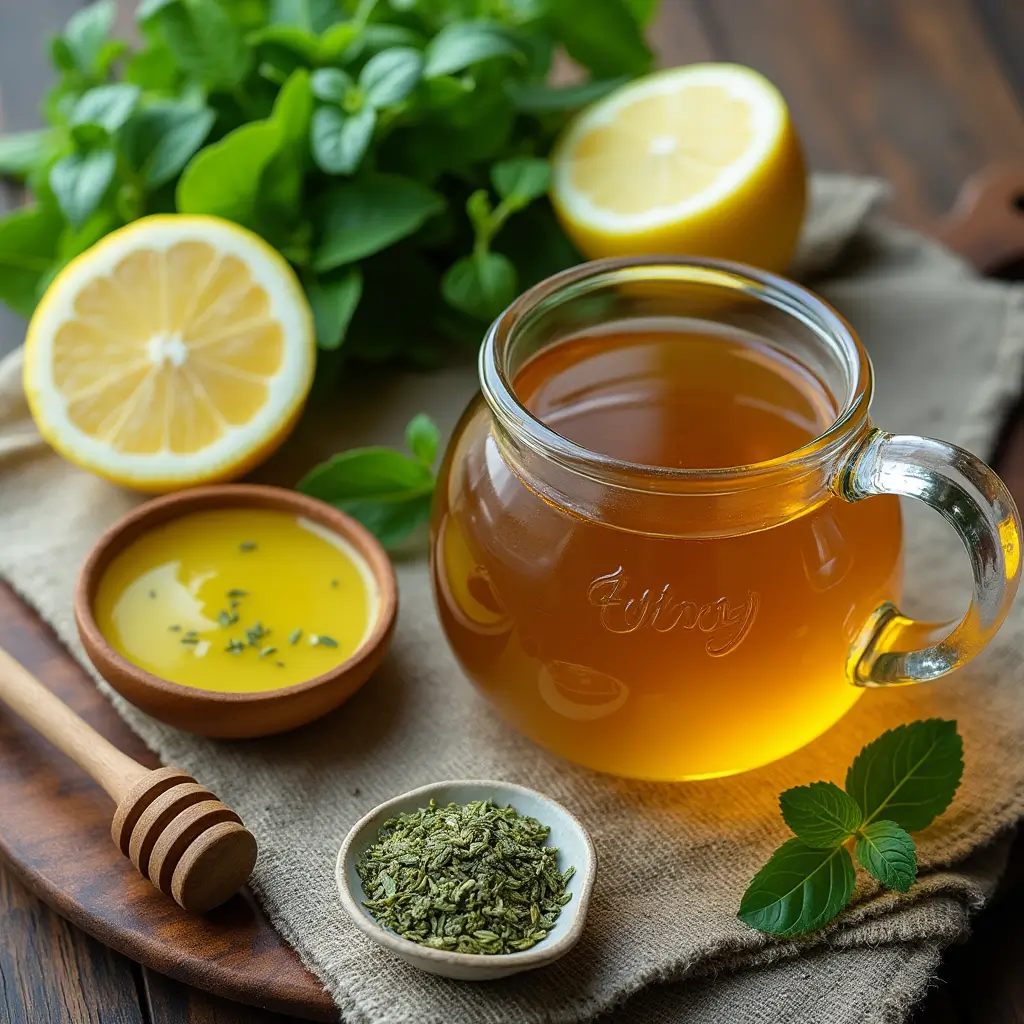
What is Lemon Balm?
Lemon balm (Melissa officinalis) is a lemon-scented herb that belongs to the mint family (Lamiaceae). Native to Europe, Central Asia, and the Mediterranean region, this perennial herb has been cultivated for over 2,000 years for its culinary and medicinal properties.
The plant features serrated, oval-shaped leaves that emit a distinctive lemony aroma when crushed. While its flavor profile is predominantly citrusy, lemon balm also offers subtle minty notes, making it a versatile ingredient in both sweet and savory dishes.
Historically, lemon balm has been used in traditional medicine systems across different cultures. The ancient Greeks and Romans valued it for its calming effects and ability to improve mood. During the Middle Ages, it was often referred to as the “elixir of life” due to its wide range of therapeutic applications.
Potential Benefits of Lemon Balm for Weight Loss
While lemon balm shouldn’t be viewed as a miracle weight-loss solution, research suggests it may offer several benefits that could indirectly support your weight management efforts:
Reduce Stress and Anxiety
One of the most significant ways lemon balm may assist with weight management is through its stress-reducing properties. Chronic stress triggers the release of cortisol, a hormone that can increase appetite, particularly for high-calorie comfort foods, and promote fat storage, especially around the abdominal area.
Research published in the journal Phytotherapy Research found that lemon balm extract significantly reduced anxiety symptoms and improved mood in participants. By helping manage stress and anxiety, lemon balm may indirectly support weight management by reducing stress-induced eating behaviors.
Improve Sleep Quality
Poor sleep quality and insufficient sleep duration have been linked to weight gain and obesity. Sleep deprivation disrupts the balance of hunger hormones (ghrelin and leptin), leading to increased appetite and potentially overeating.
Studies have shown that lemon balm may improve sleep quality due to its mild sedative effects. A 2011 study published in the Mediterranean Journal of Nutrition and Metabolism found that a combination of lemon balm and valerian improved sleep parameters in participants with sleep disorders.
Digestive Support
Digestive issues can sometimes contribute to bloating, discomfort, and irregular eating patterns that make weight management more challenging. Lemon balm has traditionally been used to support digestive health.
Research suggests that lemon balm has antispasmodic properties that may help relieve digestive discomfort. A study published in the Journal of Ethnopharmacology demonstrated that lemon balm extract could reduce gastrointestinal muscle spasms, potentially aiding digestion and reducing bloating.
Antioxidant Properties
Lemon balm is rich in antioxidants, including rosmarinic acid, caffeic acid, and flavonoids. These compounds help protect cells from oxidative stress and inflammation, which are linked to various chronic conditions, including obesity.
A 2014 study in the Journal of Medicinal Food found that lemon balm extract exhibited significant antioxidant activity, which could contribute to its overall health benefits.
Scientific Evidence
It’s important to acknowledge that while promising, research specifically examining lemon balm’s direct effects on weight loss is limited. Much of the potential benefit comes from its indirect effects on factors that influence weight management, such as stress reduction, improved sleep, and digestive support.
A 2016 review published in the Journal of Medicinal Food summarized lemon balm’s therapeutic potential, highlighting its antioxidant, anti-inflammatory, and neuroprotective properties. While these properties may be beneficial for overall health, more specific research on weight management is needed.
Important Disclaimer: Lemon balm is NOT a miracle weight-loss cure. It should be used as part of a holistic approach that includes a healthy diet and regular exercise. Weight loss results may vary significantly between individuals. Always consult with a healthcare professional before starting any new dietary or supplement regimen.
6 Lemon Balm Recipes for Weight Loss
Now that we understand the potential benefits of lemon balm for weight management, let’s explore various delicious ways to incorporate this versatile herb into your diet.
Lemon Balm Tea (The Classic)

Lemon balm tea is perhaps the simplest and most traditional way to enjoy this herb’s benefits.
Ingredients:
- 2 tablespoons fresh lemon balm leaves (or 1 tablespoon dried lemon balm)
- 1 cup boiling water
- Optional: 1 teaspoon honey or stevia for sweetness
- Optiona l: A slice of lemon or a sprig of mint
Instructions:
- Rinse fresh lemon balm leaves thoroughly.
- Place the leaves in a teapot or cup.
- Pour boiling water over the leaves.
- Cover and steep for 5-10 minutes (the longer the steeping time, the stronger the flavor).
- Strain the leaves and add optional sweetener and lemon if desired.
- Serve hot or refrigerate to enjoy as iced tea later.
Tips:
- For a stronger infusion, crush the leaves slightly before steeping.
- Combine with other herbs like chamomile for relaxation or peppermint for digestion.
- For iced tea, make a stronger brew initially as the ice will dilute it.
Nutritional Information (per serving):
- Calories: Approximately 0-25 (depending on sweetener)
- Carbohydrates: 0-6g (depending on sweetener)
- Protein: 0g
- Fat: 0g
Lemon Balm Infused Water

This refreshing infused water is an excellent way to stay hydrated while enjoying subtle herbal flavors.
Ingredients:
- 1 handful fresh lemon balm leaves (about 1/4 cup)
- 1 lemon, thinly sliced
- Optional additions: cucumber slices, berries, or mint leaves
- 2 quarts (8 cups) filtered water
- Ice cubes
Instructions:
- Gently wash and pat dry the lemon balm leaves.
- Place the lemon balm leaves, lemon slices, and any optional additions in a large pitcher.
- Using a wooden spoon, gently muddle the ingredients to release their flavors.
- Add filtered water and stir well.
- Refrigerate for at least 2 hours (preferably overnight) to allow flavors to infuse.
- Serve over ice and enjoy throughout the day.
Tips:
- For a stronger flavor, leave the infusion in the refrigerator overnight.
- Replace the ingredients after 24 hours for the freshest taste.
- Add a splash of sparkling water before serving for a fizzy twist.
Nutritional Information (per serving, 1 cup):
- Calories: Approximately 5
- Carbohydrates: 1g
- Protein: 0g
- Fat: 0g
Lemon Balm Smoothie
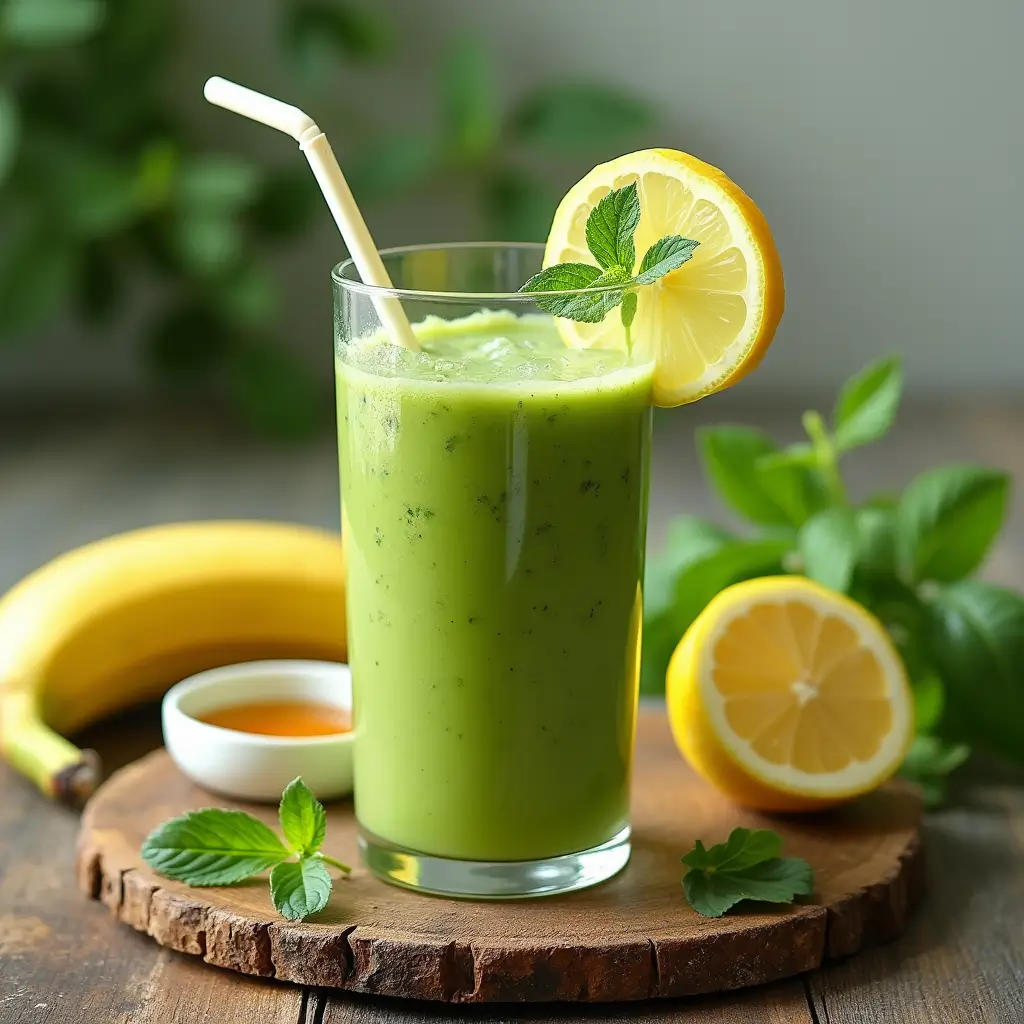
This nutrient-packed smoothie combines the calming properties of lemon balm with the nutritional benefits of fruits and greens.
Ingredients:
- 1/4 cup fresh lemon balm leaves
- 1 cup spinach leaves
- 1 ripe banana
- 1/2 cup berries (strawberries, blueberries, or mixed berries)
- 1 tablespoon ground flaxseed
- 1 cup unsweetened almond milk (or water)
- Optional: 1 date for sweetness or 1 scoop protein powder
Instructions:
- Wash the lemon balm and spinach leaves thoroughly.
- Add all ingredients to a blender.
- Blend on high speed until smooth and creamy.
- Pour into a glass and serve immediately.
Tips:
- Use frozen banana or berries for a colder, thicker smoothie.
- Add a small piece of ginger for extra digestive support.
- For a protein boost, add a scoop of plant-based protein powder.
Nutritional Information (per serving):
- Calories: Approximately 180-230 (depending on additions)
- Carbohydrates: 30-35g
- Protein: 3-20g (with protein powder)
- Fat: 4-5g
Lemon Balm Salad Dressing

Elevate your salads with this aromatic and healthy dressing.
Ingredients:
- 1/4 cup fresh lemon balm leaves, finely chopped
- 1/4 cup extra virgin olive oil
- 2 tablespoons fresh lemon juice
- 1 small garlic clove, minced
- 1 teaspoon Dijon mustard
- Salt and pepper to taste
Instructions:
- In a small bowl, whisk together the lemon juice, garlic, Dijon mustard, salt, and pepper.
- Slowly drizzle in the olive oil while continuing to whisk together until emulsified.
- Stir in the finely chopped lemon balm leaves.
- Let sit for 15 minutes before serving to allow flavors to meld.
- Store in an airtight container in the refrigerator for up to 3 days.
Tips:
- Use a blender for a creamier, for more emulsified dressing.
- Adjust the tanginess by adding more or less lemon juice.
- For a sweeter dressing, add a teaspoon of honey.
Nutritional Information (per serving, 2 tablespoons):
- Calories: Approximately 80
- Carbohydrates: 1g
- Protein: 0g
- Fat: 9g (healthy fats from olive oil)
Lemon Balm-Flavored Yogurt Parfait
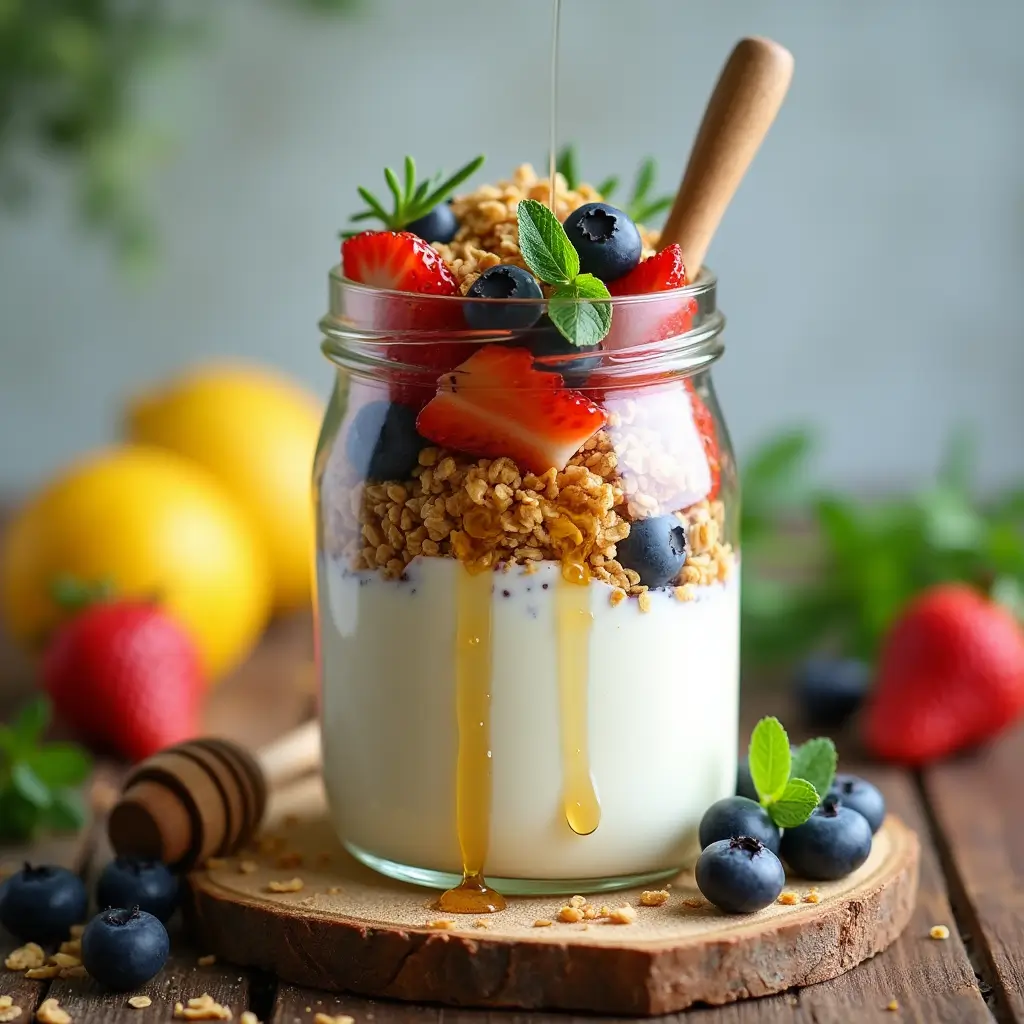
This protein-rich parfait makes a satisfying breakfast or snack.
Ingredients:
- 1 cup Greek yogurt (plain, unsweetened)
- 1 tablespoon honey or maple syrup (optional)
- 1 tablespoon fresh lemon balm leaves, finely chopped
- 1/4 cup mixed berries (fresh or frozen)
- 2 tablespoons low-sugar granola
- 1 teaspoon chia seeds
Instructions:
- In a small bowl, mix the Greek yogurt with honey (if using) and chopped lemon balm leaves.
- In a glass or jar, create alternating layers of the yogurt mixture, berries, and granola.
- Top with chia seeds and a few whole lemon balm leaves for garnish.
- Serve immediately, or refrigerate for up to 24 hours.
Tips:
- Use unsweetened yogurt and control the sweetness with natural sweeteners like honey or maple syrup.
- Make parfait jars in advance for grab-and-go breakfasts or snacks.
- Experiment with seasonal fruits for variety.
Nutritional Information (per serving):
- Calories: Approximately 220-250
- Carbohydrates: 20-25g
- Protein: 20g
- Fat: 8g
Lemon Balm Pesto
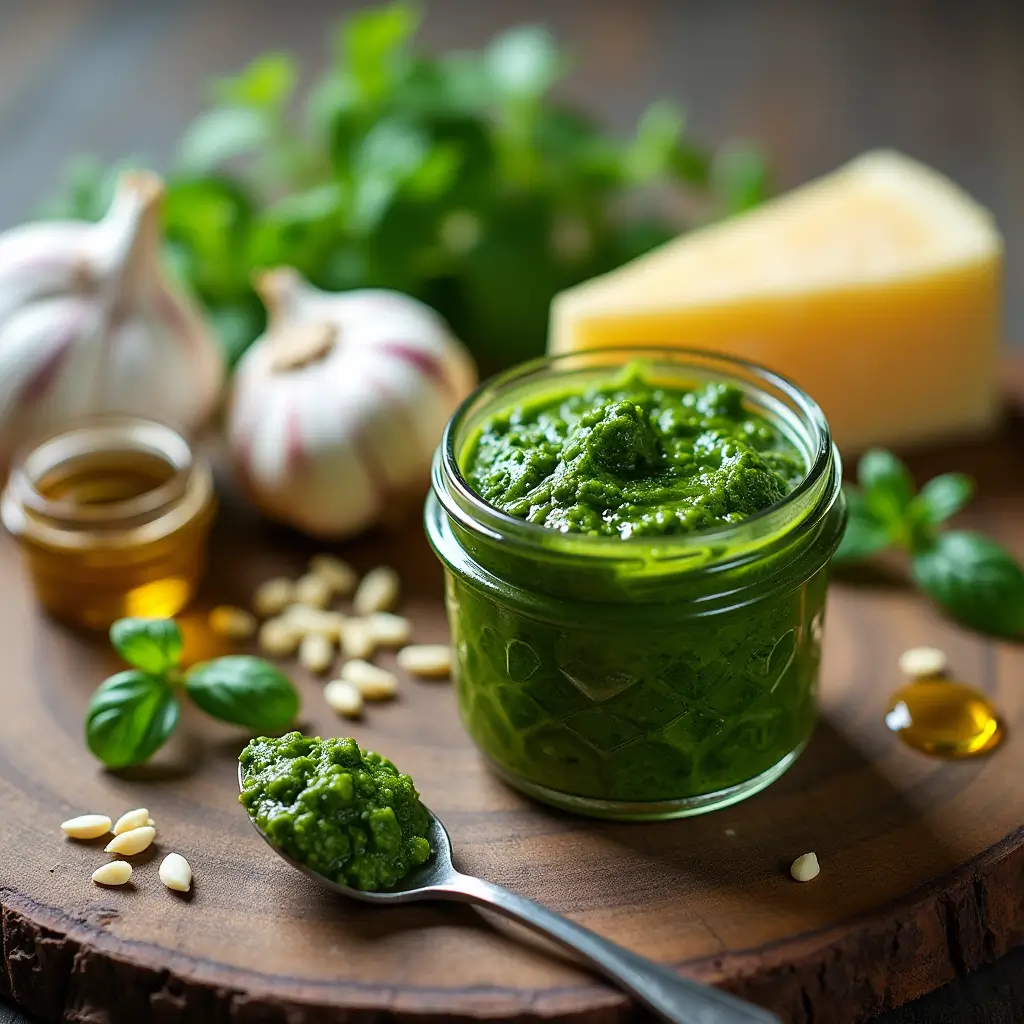
This versatile pesto can be used as a spread, pasta sauce, or flavor enhancer for various dishes.
Ingredients:
- 1 cup fresh lemon balm leaves
- 1 cup fresh basil leaves
- 1/4 cup walnuts or pine nuts
- 2 garlic cloves
- 1/4 cup grated Parmesan cheese (or nutritional yeast for a vegan option)
- 1/3 cup extra virgin olive oil
- 1 tablespoon fresh lemon juice
- Salt and pepper to taste
Instructions:
- In a food processor, combine lemon balm, basil, nuts, and garlic. Pulse until coarsely chopped.
- Add Parmesan cheese or nutritional yeast and pulse again.
- With the processor running, slowly drizzle in olive oil until the mixture becomes a smooth paste.
- Add lemon juice and season with salt and pepper to taste.
- Store in an airtight container in the refrigerator for up to 5 days, or freeze in ice cube trays for longer storage.
Tips:
- Use as a spread on whole-grain toast or crackers.
- Toss with zucchini noodles or whole wheat pasta for a light meal.
- Thin with additional olive oil or lemon juice to use as a salad dressing.
Nutritional Information (per serving, 2 tablespoons):
- Calories: Approximately 120
- Carbohydrates: 1g
- Protein: 2g
- Fat: 12g (primarily healthy fats)
How to Grow and Harvest Lemon Balm
Growing Lemon Balm
Growing your own lemon balm ensures you always have fresh leaves on hand for your recipes. Here’s how to grow this versatile herb:
Planting Instructions:
- Seeds: Sow seeds indoors 6-8 weeks before the last frost or directly in the garden after the danger of frost has passed. Lightly cover the seeds with soil, as they need light to germinate.
- Seedlings: Plant seedlings in spring after the last frost, spacing plants 18-24 inches apart.
- Propagation: Lemon balm can also be propagated from cuttings or by dividing established plants.
Sunlight and Soil Requirements:
- Lemon balm prefers partial shade but can tolerate full sun in cooler climates.
- Plant in well-draining, fertile soil with a pH between 6.0 and 7.0.
- Adding compost to the soil before planting will provide necessary nutrients.
Watering and Fertilizing Tips:
- Keep soil consistently moist but not waterlogged.
- Water deeply when the top inch of soil feels dry.
- Apply a balanced organic fertilizer in spring and mid-summer for optimal growth.
Pest and Disease Control:
- Lemon balm is relatively pest-resistant but may occasionally suffer from powdery mildew or root rot.
- Ensure adequate air circulation and avoid overhead watering to prevent fungal diseases.
- Common pests include aphids and spider mites, which can be controlled with insecticidal soap if necessary.
Harvesting Lemon Balm
When to Harvest:
- Begin harvesting lemon balm once the plant is at least 6-8 inches tall and has multiple stems.
- The best time to harvest is in the morning. After the dew has dried but before the sun is at its peak.
- For the strongest flavor, harvest just before the plant flowers.
How to Harvest:
- Use clean, sharp scissors or pruning shears to cut stems about 2-3 inches above the ground.
- Regular harvesting encourages bushier growth and prevents flowering, which can diminish flavor.
- You can harvest up to one-third of the plant at a time.
Drying and Storing Lemon Balm:
- Fresh Storage: Wrap stems in a damp paper towel and store in a plastic bag in the refrigerator for up to a week.
- Drying: Hang bundles of stems upside down in a warm, dry, dark place until leaves crumble easily (1-2 weeks).
- Freezing: Chop leaves and freeze in ice cube trays with water or olive oil for later use in recipes.
- Storage: Store dried leaves in airtight containers away from light and heat for up to a year.
Potential Side Effects and Precautions
While lemon balm is generally considered safe for most people when used in food amounts, it’s important to be aware of potential side effects and precautions:
Possible Side Effects
- Some individuals may experience drowsiness, particularly when lemon balm is used in large amounts.
- Less commonly, nausea, vomiting, abdominal pain, dizziness, and allergic reactions may occur.
- Lemon balm may potentially increase GABA levels in the brain, which could increase the effects of alcohol.
Drug Interactions
Lemon balm may interact with several medications, including:
- Sedatives and sleep medications (may enhance drowsiness)
- Thyroid medications (may interfere with thyroid hormone function)
- HIV medications
- Medications that are broken down by the liver
Always make sure to consult with a healthcare professional before using lemon balm therapeutically, especially if you have any underlying health conditions or are taking medications.
Pregnancy and Breastfeeding
Limited aount of information is available regarding the safety of lemon balm during pregnancy and breastfeeding. While it’s generally considered safe in food amounts, medicinal quantities should be avoided without professional guidance. Consult with a healthcare provider before using lemon balm therapeutically during pregnancy or while breastfeeding.
Frequently Asked Questions (FAQ)
Does lemon balm really help with weight loss?
Lemon balm itself isn’t a direct weight loss agent, but it may support weight management indirectly by helping reduce stress (which can lead to emotional eating), improving sleep quality (poor sleep is linked to weight gain), and supporting digestion. For effective weight loss, it should be combined with a balanced diet and regular exercise.
Video Tutorial
How much lemon balm should you take for weight loss?
There’s no standardized dosage specifically for weight loss. For general health benefits, 1-2 cups of lemon balm tea daily or incorporating fresh leaves into your recipes is typically considered safe. Always start with small amounts to see how your body responds.
Can I drink lemon balm tea every day?
Most people can safely enjoy 1-2 cups of lemon balm tea daily. However, long-term use of high doses might affect thyroid function in some individuals. If you have any medical conditions or take medications, consult with a healthcare provider about regular consumption.
Where can I buy lemon balm?
Fresh lemon balm can be found at farmers’ markets, specialty grocery stores, or nurseries (as plants). Dried lemon balm and supplements are available at health food stores, specialty shops, and online retailers. Seeds for growing your own can be purchased from garden centers or seed catalogs.
Can I grow lemon balm indoors?
Yes, lemon balm can be successfully grown indoors in containers. Place it near a south or west-facing window that receives at least 4-6 hours of sunlight daily. If natural light is insufficient consider using grow lights to supplement.
Is lemon balm safe for children?
In culinary amounts, lemon balm is generally considered safe for children. However, medicinal preparations or supplements should only be given under the guidance of a healthcare professional. Always introduce any new herb gradually and watch for any adverse reactions.
Conclusion
Lemon balm offers a fragrant, flavorful way to potentially support your weight management journey. From its stress-reducing properties to its digestive benefits, this versatile herb can be a valuable addition to a holistic approach to weight loss.
By incorporating the lemon balm recipes for weight loss shared in this guide—whether you enjoy a soothing cup of lemon balm tea, a refreshing infused water, or a nutritious smoothie—you’re not only adding delightful flavors to your diet but potentially supporting your body’s natural balance.
Remember that sustainable weight management is about creating lasting, healthy habits rather than seeking quick fixes. Lemon balm can be one tool in your wellness toolkit, alongside nutritious eating, regular physical activity, adequate sleep, and stress management.
We encourage you to try these recipes, perhaps even grow your own lemon balm, and discover which preparations you enjoy most. Share your experiences with friends and family who might also benefit from this wonderful herb.
As with any health-related changes, it’s wise to consult with a healthcare professional for personalized advice, especially if you have underlying health conditions or are taking medications.
Here’s to your health and wellness journey, naturally supported by the gentle power of lemon balm and Dellas Recipes!
